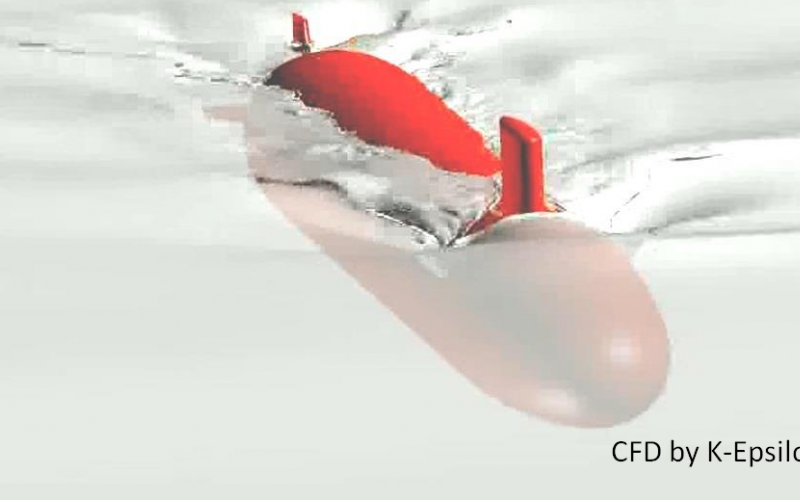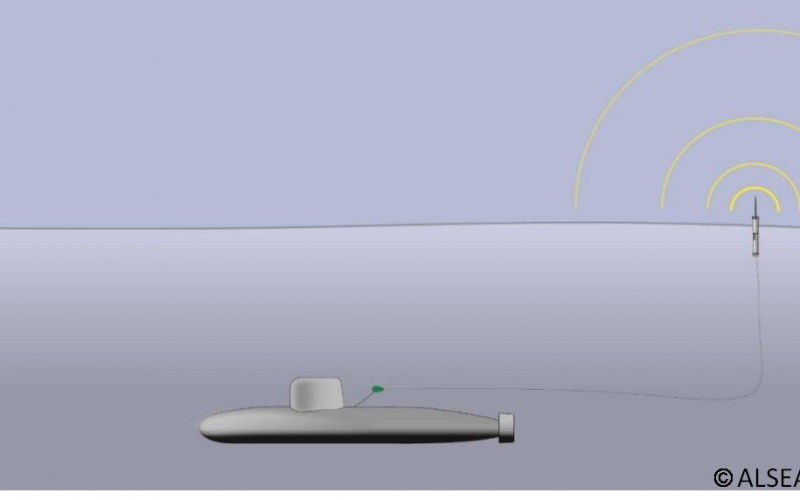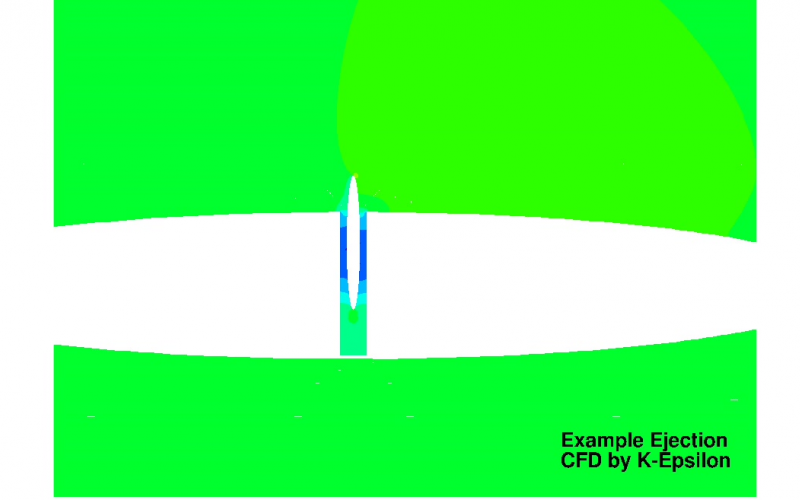Cloud-based simulation of the hydrodynamic behaviour of buoys
Computational Fluid Dynamics (CFD) has demonstrated its ability to model detailed scenarios with great robustness. However, some very complex applications are still challenging. For such applications, High Performance Computing (HPC) is required to perform the required computations in a reasonable timeframe. Very often, SMEs, designing and manufacturing innovative products, need access to HPC-based CFD as part of their design process. However, the ownership of an HPC system is usually beyond the financial resources of an SME. Conversely, the availability of such a system on a pay-per-use basis is affordable for even small companies. ALSEAMAR is a French SME, specialised in the design and manufacturing of radio communication systems for both surface ships and submarines. Alseamar wanted to develop a releasable, communication buoy for submarines. This experiment aimed to design such a device using HPC-based CFD. K-Epsilon is a French SME which offers CFD consulting and the development of customised software. In particular K-Epsilon develops and markets the software package K-FSI which formed the basis for the simulation model used in this experiment. In addition to this, the role of K-Epsilon in this experiment was to support the partners in the simulation of a releasable communication buoy, using Cloud-based HPC, and to demonstrate the benefits of advanced CFD simulations.
The Challenge
The challenge was to simulate, during the launching phase, the behaviour of a radio communication buoy released from a submarine. Indeed, numerical simulation is the only way to predict the behaviour of such a buoy because tests involving submarines in a real environment are almost impossible. This type of simulation involves fluid-structure interaction and overlaid meshes to obtain realistic results. The use of these technologies requires larges and fine meshes (several millions of cells). Computations are required to run for multiple days to converge. To compute such large and complex cases in a reasonable timeframe, simulation software must necessarily be run on an HPC system. CFD is not an easy solution for SMEs such as Alseamar because generally they do not have the necessary resources and expertise in-house. Consequently, it has not been part of their design process. Many manufacturing SMEs currently do not have a satisfactory solution to the simulation of innovative designs. The goal of this experiment was to make HPC-based simulation available and affordable to Alseamar and other manufacturing SMEs.
The Solution
K-FSI and other supporting software has been ported to the BULL eXtreme factory HPC-as-a-Service to create an appropriate simulation model. An on-line solution monitor has been integrated with the eXtreme factory web interface. This monitor collects the information about computations running on eXtreme factory and sends them to a K-Epsilon web page accessible only by K-Epsilon staff. Because naïve end-users such as Alseamar do not possess the skills to perform simulations of such complex cases, K-Epsilon makes use of the pay-per-use HPC cloud on their behalf. Specific workflows have been developed on the HPC system to reduce engineering time and to feed into the Alseamar design cycle.
The Benefits
In this experiment, Alseamar has developed a releasable communication buoy for submarines. The commercialisation of this new product has now started. The resultant revenue is estimated to be €500K in 2017 and €1M in 2018. Alseamar estimates that 3 jobs will result and its turnover will increase by 20%. These figures are based on the sale of 125 units in 2017 and 250 in 2018. Through this experiment, Alseamar has gained confidence in using CFD simulations to improve their design process, offering an alternative to physical tests.
This experiment enabled K-Epsilon to integrate its in-house tool K-FSI on a HPC cloud, with a pay-per-use service. The results have demonstrated the capabilities of K-Epsilon to address very complex cases with K-FSI. 2 jobs were created during the Fortissimo project, and K-Epsilon expects to create another 3 positions in a five-year plan. K-Epsilon’s annual turnover is expected to increase by 8% in 2017, and by 65% over the next five years.
In Bull’s experience for this type of application, HPC compute revenues associated with an ISV offering usually account for around 20% of the total amount billed to the customer. The remainder is allocated as 50% ISV licence fees and 30% added services. For Bull, this experiment has been an opportunity to reach new potential customers in the maritime market. Bull will earn 20% of the turnover from simulations by K-Epsilon, through the provision of cycles via eXtreme Factory.
Companies Involved
End-user: Alseamar
Application Expert and ISV: K-Epsilon
HPC Provider and Expert: BULL




